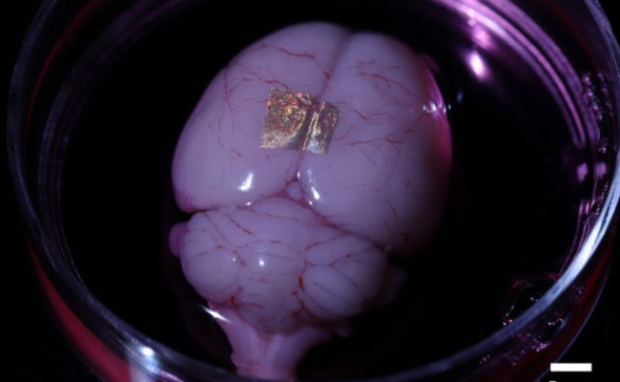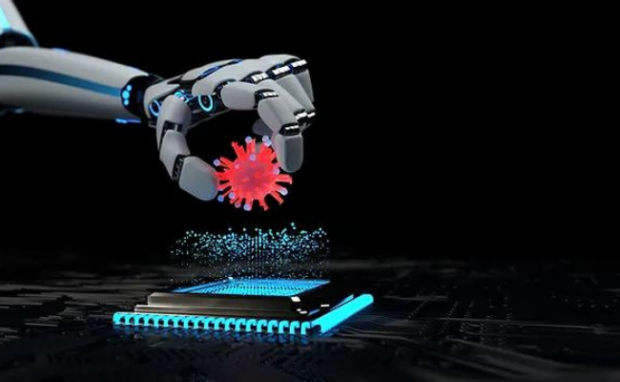Scientists put gold tattoos on cells
Would you ever get gold tattoos not for swag but for science? Johns Hopkins University researchers discovered a way to imprint gold metal on living microscopic cells. Gold is a common foundation for complex circuitry, meaning their findings could enable us to attach electronic devices to cells. As a result, it could usher in a new era for medicine!
Imagine if your blood pressure monitor works 24/7 in your heart. It might be able to notify you if your heart beats too fast and alert paramedics. Also, that technology could inform you if you’re exhibiting cancer symptoms so you can excise carcinogenic cells early. Even better, it could lead us closer to improving our bodies with cybernetic implants.
This article will discuss how scientists put gold tattoos on living cells and elaborate on their research purpose. Then, I will cover other recent medical breakthroughs.
How did scientists put gold tattoos on cells?

Photo Credit: sciencealert.com
Johns Hopkins University scientists used nanoimprint lithography to “ink” gold tattoos on microorganisms. I must explain that process before discussing the JHU research.
Nanoimprint lithography embeds microscopic patterns on objects. Nanotech news outlet AZoNano said it has applications in numerous industries, such as semiconductor production.
Factories use it to form circuits on the minuscule components of vacuum cleaners, RAM modules, and other common appliances. Recently, JHU engineer David Gracias and his team discovered how to apply that technology to living cells by:
- They printed nanoscale gold lines or dots on a polymer-coated silicon wafer using nanoimprint lithography.
- Then, the researchers dissolved the polymer to isolate the gold nanoarray.
- They transferred it to a piece of glass.
- Next, the experts functionalized the gold with cysteamine and covered it with a hydrogel layer. The latter enables them to peel away the glass.
- The scientists coated the patterned side with gelatin and attached it to live fibroblast cells.
- Lastly, the researchers degraded the hydrogel to expose the gold pattern on the cell’s surface.
You may also like: How to Play League of Legends
Gracias said their approach is cost-effective for attaching nanoscale components like antennas, circuits, and electrodes. As a result, Eurekalert says their research could pave the way for developing “biohybrid materials, bionic devices, and biosensors.”
“If you imagine where this is all going in the future, we would like to have sensors to remotely monitor and control the state of individual cells and the environment surrounding those cells in real-time, the lead researcher said in a JHU news report.
“If we had technologies to track the health of isolated cells, we could maybe diagnose and treat diseases much earlier and not wait until the entire organ is damaged,” he added. Gracias mentioned “controlling” cells, so we may get devices that significantly improve our bodies!
What are some other medical research projects?

Photo Credit: massiveanalytic.com
LabGenius and other experts have been advancing medicine with advanced technologies. That medtech company created an artificial intelligence that helps create treatments for previously incurable diseases.
It facilitates the creation of synthetic antibodies, which was a painstakingly slow process in the 1980s. Protein designers had to sift through millions of potential amino acid combinations until they produced a viable result.
“If you want to create a new therapeutic antibody, somewhere in this infinite space of potential molecules sits the molecule you want to find,” says LabGenius founder and CEO James Field. Consequently, he and his company created an AI model to expedite that process.
You may also like: League of Legends Soul Fighter event is coming soon
Read more: https://technology.inquirer.net/125530/league-of-legends-soul-fighter#ixzz8BpplG71F Follow us: @inquirerdotnet on Twitter | inquirerdotnet on Facebook
“The only input you give the system as a human is, here’s an example of a healthy cell, here’s an example of a diseased cell,” the chief executive said. “And then you let the system explore the different [antibody] designs that can differentiate between them.”
The machine learning model learns from experimental results, increasing the chances of deriving better ones. Thus, it is significantly more efficient than human protein designers.
Google has also been developing medical AI technologies like its medical chatbot. The online search giant says its Med-PaLM 2 will answer medical questions for patients in countries with “more limited access to doctors.” However, the company is still testing it at the time of writing.
Conclusion
Johns Hopkins University scientists discovered a way to put gold tattoos on living cells. They say it could become the foundation for cutting-edge biomedical devices.
This technology could significantly improve cancer detection, alerting patients to potential symptoms to prevent them from worsening. Also, lead researcher Gracias claims it could help create cybernetic implants for humans.
However, it requires more research and development to gain practical applications. Learn more about the latest digital tips and trends at Inquirer Tech.